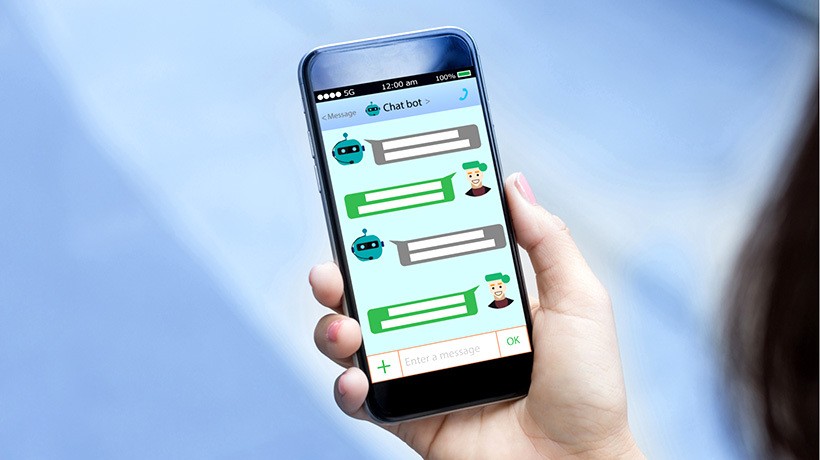AI-Driven Dialogue
The rapid change in processing power has facilitated the deployment of automatic conversational agent technologies, also referred to as chatbots or virtual assistants. Such software systems combine a range of techniques and tools that facilitate human-like communication between humans and computer-based systems. Virtual assistants interpret and react to user instructions or inquiries by utilizing Artificial Intelligence (AI), Machine Learning (ML), and Natural Language Processing (NLP) algorithms. By comprehending purpose, interpreting text and voice, translating across different languages, and mimicking human speech patterns, conversational AI can converse with humans in a natural way.
Paradigms Used By Conversational Agent Technologies
- Machine Learning and AI
Through the process of learning from data, Machine Learning algorithms allow chatbots to gradually enhance their functioning and answers. Chatbots can now comprehend context, adjust to human behavior, and have more individualized conversations thanks to Artificial Intelligence techniques like deep learning and neural networks. - Natural Language Processing
NLP makes it possible for computers to produce, decode, and comprehend human language. It includes activities like sentiment analysis, named entity identification, language production, and language understanding, which enable chatbots to understand and react to human input. - Intent recognition
Chatbots can better comprehend a user's query's intention or objective with the aid of intent recognition technologies. Chatbots classify and recognize user intent to deliver precise and pertinent replies by evaluating spoken or written input. - Dialogue management systems
The dialogue between the user and the chatbot is managed by dialogue management systems. These technologies facilitate more interesting conversations by preserving context, controlling turn-taking, and guaranteeing a cogent and organic dialogue. - Speech recognition
Algorithms for speech recognition have existed for some time. Spoken language may now be understood and processed by chatbots that have voice recognition built in. With the usage of this technology, consumers may communicate with chatbots using voice commands or text inputs that are converted from audio. - Information retrieval
Chatbots can access large volumes of organized and unstructured data with the use of knowledge graphs and information retrieval algorithms, giving users accurate and contextually relevant information. - Emotion and sentiment analysis
To interpret the emotional tone or sentiment behind user input, many sophisticated chatbots make use of emotion and sentiment analysis tools. This facilitates the provision of more tailored and sympathetic replies. - Pretrained and hybrid models
In order to increase language understanding, chatbot skills, and the generation of more contextually appropriate replies, hybrid models integrate several technologies with pretrained models, such as transformer-based language models like GPT (Generative Pre-trained Transformer) models. - Multimodal interfaces
Text-based chat interfaces, voice assistants, mobile applications, websites, and even smart devices like wearables or smart speakers are just a few of the channels via which chatbots may communicate thanks to multimodal interfaces. Over the past ten years, there has been a lot of interest in haptic or tactile feedback among these models.
To develop effective applications that integrate context, customization, and relevance within human-computer interaction, applied conversational AI requires both science and art. Creating conversational AI applications requires a strong understanding of conversational design, an area of study devoted to creating natural-sounding processes.
Although chatbots have become increasingly popular, conversational AI solutions can be provided through a variety of channels and devices that support text and voice modalities, such as phone calls, smart speakers, and SMS for text and web chat respectively. The output produced by the finest conversational AI is identical to what a person might have produced. Conversational agents, including chatbots and virtual assistants, are becoming more and more common across a variety of platforms and businesses. Depending on the location, industry, and particular application, different users may utilize conversational bots at different rates.
Main Domains For Conversational Agent Usage
1. Messaging Apps And Social Media Platforms
Chatbots and virtual assistants are now a part of messaging applications and social media platforms, helping with a range of tasks like transaction processing, information retrieval, and customer support. Many people interact with chatbots on these platforms and their number is growing fast.
2. Smartphones And Voice Assistants
Due to the increasing popularity of smartphones and voice-activated assistants such as Google Assistant, Amazon's Alexa, Apple's Siri, and Samsung's Bixby, a sizable percentage of smartphone users engage with virtual assistants for activities such as making notes, monitoring the weather, or conducting online searches.
3. Customer Service And Support
Companies have included chatbots into their websites or applications, especially those in customer care, eCommerce, and banking. According to estimates, a sizable portion of customers have dealt with chatbots when looking for help or support.
4. Applications That Are Industry-Specific
Companies are increasingly using chatbots to provide services and assistance that are customized to individual requirements in sectors including healthcare, travel, education, and finance. For information, appointment booking, or instructional reasons, users in various businesses may communicate with specialist chatbots.
Conclusion
Due to differing adoption rates in different countries, user preferences, and the rapid advancement of technology, it might be difficult to precisely estimate the percentage of users engaging with conversational bots. Nonetheless, an increasing number of polls and publications show that customers are adopting chatbots and virtual assistants into their everyday contacts with businesses and technology.









